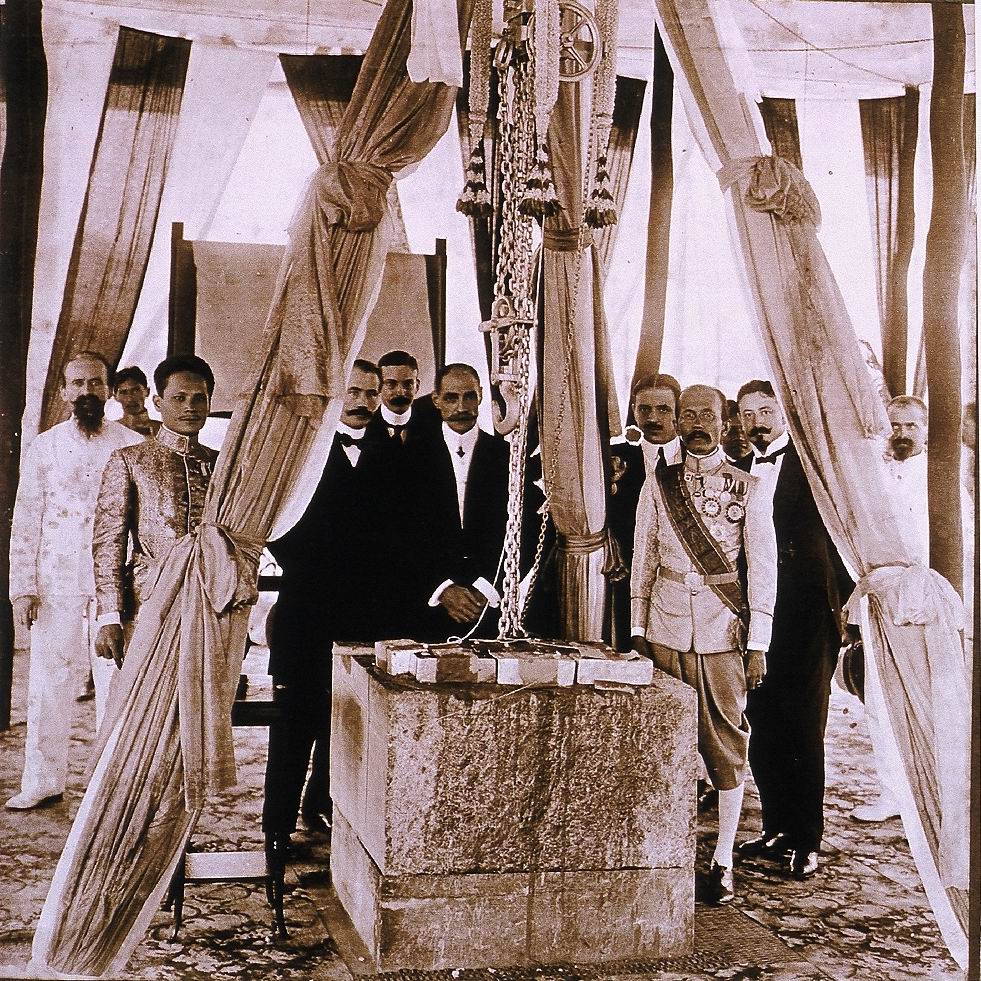|
One year after the completion of the construction of Amphorn Satharn within the Dusit Palace in 1906, His Majesty King Chulalongkorn (Rama V) had commissioned the construction of another hall. This reception hall is situated to the east of the Amphorn Satharn in addition to the other reception halls in the palace grounds. The commemorative stone was placed by His Majesty King Chulalongkorn in November, on the occasion of his 40th year of ascension to the throne. The Throne Hall was named after an old hall which was constructed during the reign of His Majesty King Mongkut (Rama IV) which at the time was in such bad condition that it could not be renovated. It was torn down and made into a garden.
The committee commissioned by His Majesty King Chulalongkorn consisted of :
Chao Phraya Yommaraj (Pan Sukhum) Head of construction
Phraya Prachakorn Vijarn (O Amatayakul) Deputy
Mr. M. Tamango Architect
Mr. A. Rigotti Assistant
Mr. C. Allegri Engineer
Mr. E.G. Gollo Assistant
Mr. C. Rigoli Painter
Prof. G. Chini Painter
More details about italian artists in Thailand
The Ananta Samakhom Throne Hall was constructed in the Italian Renaissance and Neo Classic style of architecture. The exterior is decorated with marble from Carrara, Italy.
The Throne Hall is a two storey marble construction approximately 49.50m x 112.50m. and 49.50 meters in height, with a large dome in the centre surrounded by six smaller domes.
The construction of the Ananta Samakhom Throne Hall was carried out during the later years of His Majesty King Chulalongkorns's life. He passed away in 1910 and to fulfill the late wish of His Majesty King Vajiravudh (Rama VI), it was finally completed in 1915. The construction took eight years, and the total budget came to 15 million bath.
After June 24, 1932 coup d'etat which brought a change in the regime from absolute monarchy to the constitutional monarchy, the Ananta Samakhom Throne Hall changed its status to the National Assembly until the completion of the new National Assembly building in 1974. Today, even thought the ordinary meetings of the National Assembly have been shifted to the new National Assembly building, the Ananta Samakhom Throne Hall is still considered to be the countrys National Assembly, a Grandiose, graceful and glorified representation of the Constitutional Monarchy Regime and the chief witness or symbol by which Thai people may be confident that the King, the State and the constitutional regime will be one as they have been in the past and will continue to be in the future for all times to come.
English text : Brochure of Ananta Samakhom Throne Hall,
Dusit Palace Office and Public Relations Division, The Secretariat of the Senate
Photos : Public Relations Division, The Secretariat of the Senate and the seminar on Rama V and archives, at Silpakorn University, 11 Oct. 2003
|





